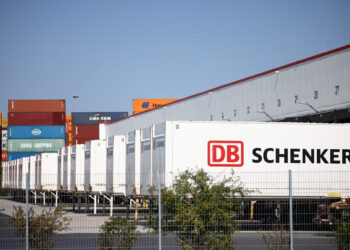Overheard at Cargo Facts Symposium Part I: Air cargo still on the upswing

SAN DIEGO – A crowd of senior air cargo executives gathered for Cargo Facts Symposium 2018, held this year for the first time at the Omni San Diego. Once again, attendees were enlightened with presentations and discussions from some of air cargo’s best and brightest while enjoying networking opportunities with the people shaping the air freight industry.
In addition to a well-attended plenary session during which speakers and attendees reaffirmed continued bullish sentiment for air cargo into 2019, this year’s Symposium featured an Air Cargo Fundamentals workshop for both seasoned industry professionals and new entrants into the air cargo industry. Attendees enjoyed frank discussions with their peers about a variety of pertinent topics to today’s industry, including how to think about fleet planning decisions and strategies for innovating air cargo operations.
Of course, one of the joys of Cargo Facts events is listening closely, not just to what is said on the stage, but also during the coffee breaks, at the cocktail receptions, and in the hallways. We like to summarize those insights every year under the title: “Overheard at Cargo Facts Symposium.” Today we start with Part I of our two-part coverage of this year’s event. Join us tomorrow for an overview of developments pertaining to narrowbody conversions and e-commerce trends.
Carriers are bullish on cargo through 2019. As we noted in our earlier coverage of the Symposium, carriers are still optimistic about air freight despite concerns over tariffs. Growth has slowed during 2018 compared to double-digit increases in traffic during 2017, but during the opening session on air cargo trends, Ian Morgan, Vice President Cargo Americas, Qatar Airways Cargo, said the statistics can obscure the real growth story of air cargo, which is found in the behavior of cargo customers. “We see growth in every sector of the market – perishables, automotive, everything is growing,” he said. The future also looks bright, as “there is now more conversation about long-term commitments and strategy,” so that “the rest of this year is fine, [and] next year still remains positive.”
Michael Steen, Executive Vice President & Chief Commercial Officer, Atlas Air Worldwide, also pointed out that cargo traffic numbers from the International Air Transport Association (IATA) don’t show the whole picture when it comes to air cargo traffic. “We have to remember that IATA numbers are only what is reported by IATA members,” he said during the panel discussion. “Domestic express in China is not reported, growing e-commerce is not reported, and it’s important we register that as an industry.”
Roadblocks still stand for Latin American cargo growth. Brazil’s economic recovery has helped to spur growth in the Latin American air freight market, but during a discussion of the region, panelists focused on a lack of sufficient infrastructure to support the sort of growth developing in Asia and other markets over the past few years. Marcelo Penna, US Cargo Country Manager for Azul Cargo Express, said that there is great potential for growth, but that airports often lack either infrastructure, customs clearance, or cargo handling capacity to support growing cross-border volumes. Andrés Bianchi, CEO of Chile-based LATAM Cargo, agreed: “The facilities are not good, especially for a continent that mainly ships perishables commodities… Processes are cumbersome. Sometimes it takes too long to get cargo processed in and out of the plane.”
As with other cargo operations across the globe, cargo directionality is also a problem in Latin America. Panelists found different ways to address that in their operations, with Jaime Alvarez Price, Senior Director, COPA Airlines Cargo, noting that COPA subsidizes its belly cargo operations by working with third-party freighter operators when needed. This can be a particularly major issue in Latin America, which is known for its produce exports to the US and Europe, and which is growing its exports to Asia, but the imbalance is expected to decrease as Latin American economies improve and demand for e-commerce continues to grow.
Belly cargo likely won’t overtake maindeck capacity. During a panel discussion on the future of widebody freighters, Boeing’s Tom Crabtree listed five major factors that Boeing expects will keep a majority of air cargo moving on freighters, rather than in the belly holds of passenger aircraft. First, since a majority of the global jet fleet is made up of narrowbody aircraft, there simply isn’t enough capacity available on passenger flights to support growing cargo demand. There also aren’t enough passenger flights to meet capacity needs when most cargo is flying, since general cargo traffic moves primarily on weekends to allow for transit between factories. As a third point, Crabtree noted that not all cargo can fly on passenger aircraft, particularly certain cargo that falls into the dangerous goods category. Live animal shipments also often require maindeck transportation. The fourth major factor is that freight forwarders are still in control of most air cargo shipments, and finally, the majority of jet aircraft operating today aren’t equipped to handle containerized cargo. While this laundry list of factors bodes well for the future of freighters, Airbus’ Oliver von Tronchin noted the main factor in belly holds’ favor is cost. Unlike Boeing, Airbus expects belly cargo to have the edge during a potential downturn, as belly cargo provides the lowest-cost option for air freight.
Paperless is the priority. While drones, robotics and unmanned aerial vehicles (UAVs) are attention-grabbing innovations in the sector, in a roundtable discussion during the opening workshop, attendees said digital sharing of information is a higher priority for the industry. Representatives from two major carriers called blockchain “the future of air cargo,” but the industry will need to walk before it can run and when it comes to digitalization, that means walking away from paper. Moving to electronic air waybills (e-AWBs) is challenging for a number of reasons, and first among them is the fact that every country has different customs requirements, with most still demanding paper documentation. An airport representative also told Cargo Facts that small and mid-sized industry players are reluctant to opt into extensive sharing of data because they are concerned about competition within the industry. However, the larger operators believe the faster processes and greater reliability and transparency outweigh any negatives that come from the digitalization process, and said that it is up to the International Air Transport Association (IATA) to drive innovation among carriers.




